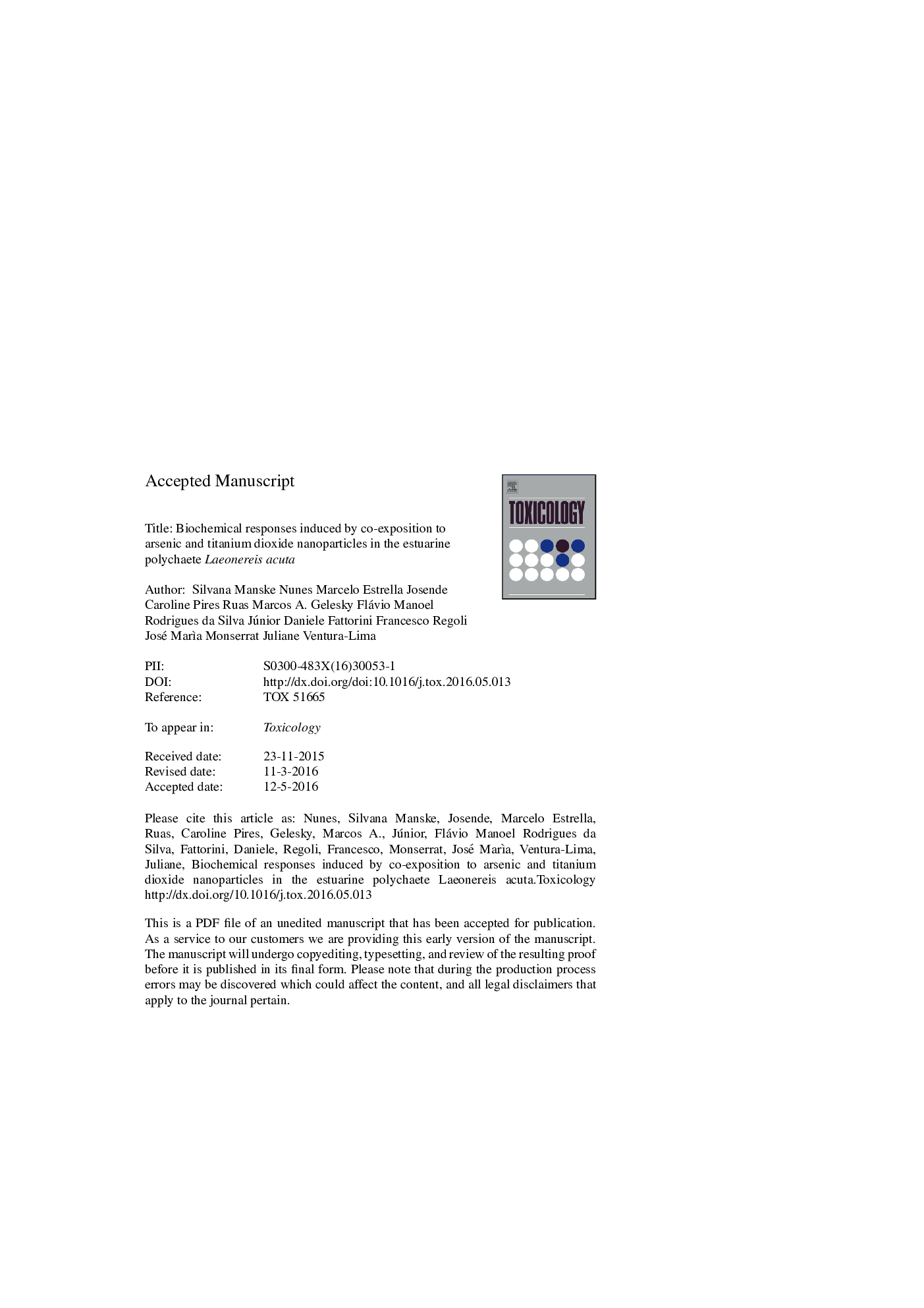| Article ID | Journal | Published Year | Pages | File Type |
|---|---|---|---|---|
| 5561834 | Toxicology | 2017 | 33 Pages |
Abstract
The production and use of nanoparticles, as titanium dioxide (nanoTiO2) is growing exponentially in the last years and their release into aquatic environment seem be inevitable. Once into environment, this nanomaterial can interact with other contaminant, as arsenic, and to exert toxic effect in living organisms. So, the objective of present study was to evaluate if the co-exposure to nanoTiO2 (1 mg/L) can alter the As effect (nominal concentration of 50 μg/L) in the estuarine polychaeta Laeonereis acuta after 48 h of exposure. Were performed biochemical analyses such ROS production, enzymatic activities (GST, GR and GSTΩ), total antioxidant capacity against peroxyl radicals and damage to macromolecules (lipid and DNA), besides also were determined the accumulation of total arsenic and arsenic speciation in the worms. The results showed that co-exposure induced an increase in the ROS levels, decrease in total antioxidant capacity, increase in GR activity, and damage in lipid and DNA. Also, the co-exposure showed to affect the metabolization capacity of arsenic characterized by increase in dimethylated arsenic forms, a compound moderately toxic. So, these results suggest that the co-exposure to both contaminants is harmful to this species and the use of nanoTiO2 to treatment of contaminated water by arsenic should be considered of a toxicological point of view.
Keywords
Related Topics
Life Sciences
Environmental Science
Health, Toxicology and Mutagenesis
Authors
Silvana Manske Nunes, Marcelo Estrella Josende, Caroline Pires Ruas, Marcos Alexandre Gelesky, Flávio Manoel Rodrigues da Silva Júnior, Daniele Fattorini, Francesco Regoli, José Marìa Monserrat, Juliane Ventura-Lima,
